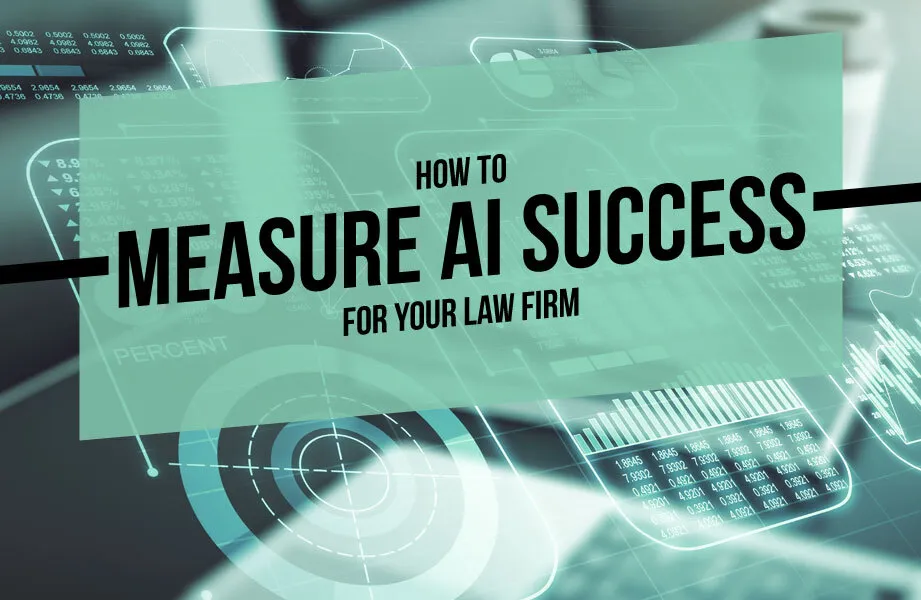
Let’s start with a shared reality. You’re looking at your Google Analytics. You’re reading headlines about AI Overviews and ChatGPT. And you’re trying to figure out if your marketing is still working, or if you’re just shouting into the void.
Your old dashboard was simple: Traffic -> Leads -> Cases. As long as “Traffic” went up, you felt good. But that model is now incomplete.
AI is creating a new, invisible top-of-funnel. A potential client can now have a 10-minute conversation with an AI, get a detailed answer to their legal question, all without ever being on a law firm’s website. If you’re lucky, you might have at least been cited in the conversation.
Even if you got in on that interaction. You built trust, your traffic report will show… nothing. This isn’t a disaster. It’s a measurement problem. Your old dashboard is only showing you the old picture. Here’s how you figure out the rest.
Your Ground Truth Metrics
Before we get to the new stuff, let’s be clear. The following metrics are, and will remain, the non-negotiable foundation for measuring your marketing’s business impact. These numbers are your ground truth.
Cost Per Signed Case
This is it. This is the only number that really matters to your firm’s bottom line. How much did you spend on marketing, and how many new, paying clients did you get from it? All marketing must eventually answer to this metric.
Cost Per Qualified Lead
You can’t get to Signed Case without first getting a lead. But not all leads are created equal. Your marketing dashboard must filter out the noise. A Qualified Lead is someone who contacts you for a practice area you handle, in the jurisdiction you serve. Your main marketing goal is to lower the cost of these leads.
These two metrics are essential. But they only measure what happens after a click. They are blind to the invisible influence you’re having before that click ever happens.
The New Challenge: Measuring Your Invisible Influence in AI
This is the new, complex part of your dashboard. How do you measure success when there is no click, no session, and no “user” to track?
You have to stop looking for a single, easy number. Start acting like a detective. Look for clues and correlations that prove your authority-building strategy is working. Here are the three main tools in your new detective kit.
Clue #1: Manual “Prompt Sampling” (The Qualitative Audit)
This is the most direct, hands-on method, and every law firm should be doing it. It’s the digital equivalent of walking down the street to see if your billboard is actually up. You have to manually spot-check the AIs.
Here’s the Process:
- Open the AIs: Go to ChatGPT, Google’s AI Mode (Gemini), and Perplexity.
- Act Like Your Ideal Client: Don’t ask simple keyword questions. Ask the complex, multi-part, nuanced questions that your clients actually ask you in consultations.
- Instead of: “DUI lawyer Chicago”
- Try: “What are the first steps I should take if I’m pulled over for a DUI in Illinois?”
- Instead of: “Divorce lawyer”
- Try: “How is child custody typically decided in a Georgia divorce when one parent works from home?”
- Analyze the Results: As you read the AI’s answer, you are looking for four things:
- Are we mentioned? Does our firm’s name appear at all?
- Are we a source? Does the AI cite one of our blog posts or practice area pages?
- Is the information accurate? When it does cite us, is the summary it provides correct and on-brand?
- Who is being cited? If we’re not being mentioned, who is? This is your new competitor analysis.
This isn’t a “hard analytic” you can put in a graph. But it is the only way to get a real, qualitative sense of your firm’s “share of voice” in the AI’s brain. It tells you, on the ground, if your content strategy is working.
Clue #2: Analyzing AI Referral Traffic (The Tip of the Iceberg)

When you log into your Google Analytics, you can look at your “Referral” traffic sources. You might start seeing traffic from domains like chat.openai.com, perplexity.ai, or gemini.google.com.
Your first reaction might be, “That’s it? It’s only a few of clicks.” A single click from an AI referrer is only part of the picture.
That one click represents the tiny fraction of users who took the rare extra step to click the source link for validation in an AI conversation.
For every one person who clicks, there could be 10, 50, or 100 others who saw your firm’s name, trusted the AI’s answer, which was built on your content, and were influenced by your brand without clicking.
So, how do you measure this? You don’t dismiss this traffic as “small.” You track it, and you should assume the conversion rate from this tiny pool of traffic will be exceptionally high, because these are the most pre-qualified, high-intent researchers you can get.
Does AI Traffic Still Convert for Law Firms?
Clue #3: Tracking Branded Search (The Measurable Payoff)
This is the final, and most important, new metric for your dashboard. This is where all the invisible influence finally becomes visible.
Think about the user journey.
- A potential client asks ChatGPT a complex legal question.
- The AI provides a great answer and cites “Smith Law Group” as an expert source.
- The user is impressed. They close the chat. They don’t click the referral link.
- Two days later, when they are ready to make a call, what do they do? They don’t go back to the chat. They go to Google and type in “Smith Law Group Chicago.”
This is a Branded Search.
How to Measure It: This is data you can easily track in your Google Search Console. You can create a filter to isolate all the search queries that include your firm’s name, your partners’ names, or your brand.
What It Means: In a world where your overall organic traffic from generic keywords might be flat or declining, a rising tide of branded search is the clearest possible signal that your AI authority-building strategy is working.
It proves that you are successfully building a brand that clients seek out by name. This is the ultimate goal. You are transitioning from a law firm that has to find new clients to a law firm that new clients search for.
Read More: Managing AI Access to Your Law Firm Website
The “Black Box” Problem: Where Is Your ChatGPT Analytics Dashboard?
You’re used to getting reports for your marketing spend. You get Google Analytics for your website, engagement reports for your social media, and open rates for your email.
So, where is your ChatGPT dashboard? Where do you log in to see how many times your firm was cited last month, which prompts led to your content, or how many users saw your name?
There isn’t one.
To understand why, you have to understand the fundamental difference in business models. Think of it this way: Google Search Console is a two-way mirror. ChatGPT is a black box.
Google’s entire ecosystem is built on a trade: you give them your content, and in return, they send you traffic (which they monetize with ads). To prove the value of that traffic and to help you optimize your content for their system, they must provide a tool like Google Search Console. It’s the analytics dashboard for their marketplace. You get to see (some of) what Google sees.
Will AI Companies Ever Release Analytics?
OpenAI, Perplexity, and other pure generative AI platforms are not search engines. They are answer engines. Their product is the answer itself. Their business model, for now, is built on selling subscriptions to users for a better, faster answer.

You are not their partner. You are their library.
These AI companies are not in the business of sending you traffic. They are in the business of satisfying their user so they don’t have to click away to your site. They have zero business incentive to build a massive, complex, and expensive analytics platform to tell millions of website owners how their content is being used. It’s simply not their model.
Will this ever come? As of late 2025, there is no indication of it. The only way you will likely ever see “analytics” from a platform like ChatGPT is if, or when, they launch their own advertising platform. If that day comes, they will be forced to provide analytics for those ads, but it’s highly unlikely they will ever offer it for organic citations.
This is precisely why you cannot wait for a report. It’s why the invisible influence dashboard is so critical. You are forced to look for the clues (like Branded Search and Referral Traffic) because the AI platforms are not going to give you the answers.
Civille: Helping You Find and Measure Success in AI
Interpreting this new, combined set of metrics is complex. It requires more than just looking at a traffic graph. It demands a deep understanding of how AI is changing user behavior. This isn’t just SEO anymore. It’s digital authority management.
At Civille, we are already building for this new reality. Our content is designed for both AI and SEO from the ground up. We partner with you to translate your legal expertise into authoritative articles that are clearly structured, technically sound, and built to be the definitive answer an AI wants to cite.
But we don’t just build it and hope. We dig into your analytics and the other metrics we’ve discussed, your branded search, your AI referral traffic, and qualitative prompt sampling, to find where you are winning in AI and where you can do better. We filter out the noise and show you what’s actually working.
If you’re tired of being in the dark about your marketing and want a partner who understands how to build and measure success in this new AI-driven world, it’s time to talk to Civille.





